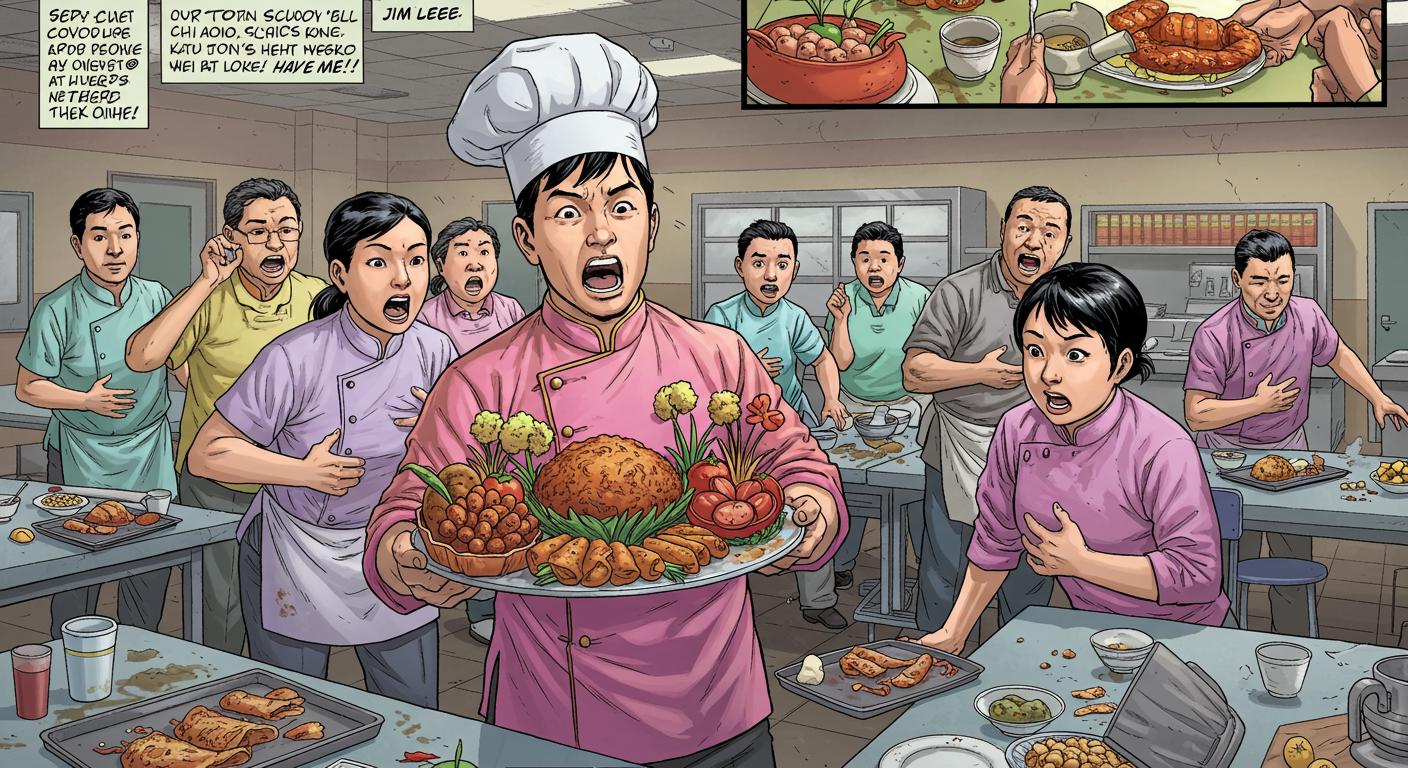Sometimes life outdoes satire. You can spend decades trawling the stranger strata of human history, and yet it remains genuinely surprising how often real events manage to one-up the imagination. Case in point: a well-intentioned flourish of culinary creativity at a kindergarten in northwest China has resulted in one of the most bewildering public health disasters in recent memory. If ever there were a cautionary tale about the profound risks of thinking outside the recipe box, this is surely it.
When Food Art Becomes Chemical Warfare
According to BBC reporting, more than 200 children—233, to be precise—at Peixin Kindergarten in Tianshui City, Gansu province, are receiving hospital treatment after chefs at the school, following a principal’s instruction, decorated steamed red date cakes and sausage corn buns with inedible paint. Not the edible kind, not ambiguous “food colorant,” but actual, clearly labeled “not for consumption” paint, purchased online. Tests revealed that the lead levels in these cakes reached up to 2,000 times China’s already established safety limit for food. Investigators, as highlighted by the BBC, found that the red date cake and the corn sausage rolls contained lead levels of 1052mg/kg and 1340mg/kg respectively, in stark contrast to the national food safety standard of 0.5mg/kg.
It’s astonishing, really. On the one hand, there was the noble aim to make lunchtime more visually appealing for preschoolers. On the other, a decision chain that somehow didn’t grind to a halt at the words “inedible paint.” The food had been decorated with this toxic flourish for an uncertain stretch; several parents, described in both BBC and WION, reported that their children were complaining of stomach and leg pain and a lack of appetite as early as March.
If humor is tragedy plus time, you almost wonder how many similar food-decorating brainstorms have gone awry further back in culinary history—just minus the modern laboratory analysis.
Hide-and-Seek and the Art of Not Getting Caught
The aftermath reads like a farce with alarming consequences. The LBC report details how, after the children became ill, police launched an investigation that led them to search for and discover the hidden paint supplies. It wasn’t just one rogue chef—authorities have arrested eight people, including the school’s principal and the main investor, on suspicion of producing toxic and harmful food, as law enforcement believes this was a coordinated misjudgment rather than a one-off error. Staff in the kitchen were even captured on CCTV, as broadcast by Chinese state media, physically adding pigment to the food—every lurid step preserved for posterity.
In a detail highlighted by both BBC and WION, the paint was clearly marked as unsuitable for food, and yet was bought online at the explicit instruction of the principal. The sequence of poor decisions would be almost comedic if not for the aftermath. Parents like Mr. Liu, described in the BBC’s coverage, took swift action when their children fell ill, but hospital stays and treatment—ten days, in some cases—are a heavy price for a kindergarten snack gone wrong.
Oversight That Actually Needs Oversight
So, where did things break down? The mayor of Tianshui, Liu Lijiang, remarked—quoted by several outlets—that the incident exposed loopholes in public food safety supervision. With a privately run school at the center, there’s an especially sharp question about regulatory vigilance. WION observes that this episode has put a spotlight on how regulations can be rendered meaningless when they’re ignored or skirted entirely. The scale is almost difficult to grasp: when safety limits are exceeded by two or three orders of magnitude, is it a gap, or a chasm, in oversight?
It’s also sobering to realize, as noted by LBC, that no one is entirely clear for how long the inedible paint had been making guest appearances atop these cakes and buns. The timeline, at least for the children, involves months of mysterious symptoms and repeated complaints before any alarms sounded loudly enough for authorities to intervene.
An Antidote to the Decorative Impulse
Accidents have always been part of culinary history—burnt soufflés and cut fingers are just part of the gig. But the leap from “let’s make these buns more fun” to “let’s make them radioactive” is another matter entirely. If there’s a pattern, it might be the enduring belief that appearances can be separated from content, function from form. The alluring look of a yellow corn roll trumps the mundane details like, well, toxicity.
There’s also an oddly human logic to the entire affair—when mistakes are made, the first instinct is rarely confession but concealment. Police had to physically hunt down the hidden paint, according to all three major outlets. Modern life comes with hazards, but most of us don’t expect them to arrive in the form of a smiling, colorfully-painted kindergarten snack.
Where Do We Go From Here?
More than 200 children are still undergoing medical treatment, and the aftershocks of this event will linger for some time. The outlets collectively note the uncertainty that surrounds not just the physical health impact on these children, but the regulatory reckoning that must now follow. There will be investigations, bureaucratic reviews, and—perhaps—a close look at how such an obviously bad idea slipped so easily into practice without detection.
But perhaps the weirdest question remains—how many other oddball food “enhancements” happen every day, unexamined and untested, in the drive to impress, to beautify, or simply to keep up with the trending snacks on social media? How many corners are cut in the struggle for presentation, not substance?
One suspects that, in kitchens and classrooms everywhere, this story will become a parable—about looking before you garnish, yes, but mostly about the deeply unpredictable ways that human ingenuity can go sideways in the pursuit of the novel. Sometimes, the tastiest-looking bun is just that: a bun. And that really should be enough.







